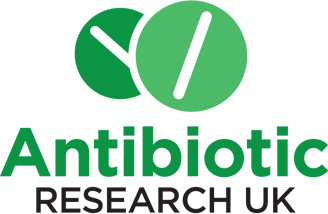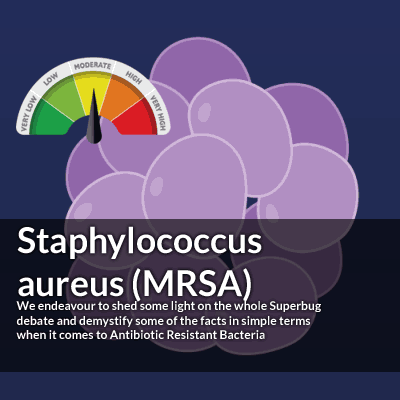In this post, we’re going to share some information about MRSA and antibiotic resistance.
First Documented: 1884
Illness Caused: Pneumonia, Flesh Eating Disease
Antibiotic Resistance: Medium
Virulence: Dangerous
MRSA is a bacteria and acronym to make a long condition easy to remember! The full name is methicillin-resistant staphylococcus aureus. We struggle to remember it, so we don’t blame you if you stick to the acronym. Everyone has heard of this wee little germy. It’s left many paranoid about receiving treatment in hospitals. Anyone remember Leslie Ash? She’s an actress in men behaving badly and partner to Leeds United Old First Division winners in 1991 with Leeds United. Well, she was stricken with MRSA and it nearly cost her life.
MRSA Antibiotic Resistant Infection shows itself on the human skin
This bacteria superbug MRSA spreads very easily through human contact. The symptoms of MRSA can range in magnitude but all sound pretty scary. They include skin disorders, like boils and pimples; if it gets into the blood stream it can begin to eat the flesh. Other more serious disorders are deadly like meningitis and pneumonia. The first discovery of MRSA was as long ago as 1864, when life expectancy in the UK was only just over 40. In those days death by infection was common place as there was no antibiotic penicillin to treat people. Penicillin as a widely available antibiotic was only prescribed by GP in the times of the Second World War around 1943. Before this time treatments for infection were antiseptics like alcohol, iodine etc.
Life expectancy in the UK since commercial antibiotics became available c.1935
By the 1960s because of the wonderfully versatile nature of all bacteria to mutate or evolve 80% of these MRSA superbugs become resistant to penicillin and other forms of antibiotics. These were samples all came from inside hospitals. Since that time there has been huge improvements to the responses to outbreaks of MRSA. Now, the NHS tracks the outbreaks or clusters of the bacterial infections. Additionally, their overall levels of hygiene practices help to control transmission of MRSA bacteria that show antibiotic resistance. This has seen overall rates of infection being reduced by 84.4% 84.7 per cent in the UK between 2003 and 2011, proving that prevention is often the best form of defence against bacteria.
Simple Preventative Methods in Hygiene to avoid MRSA




You must log in to post a comment.